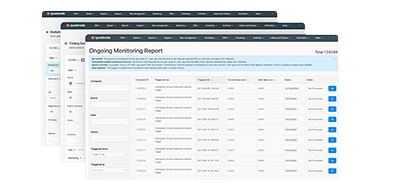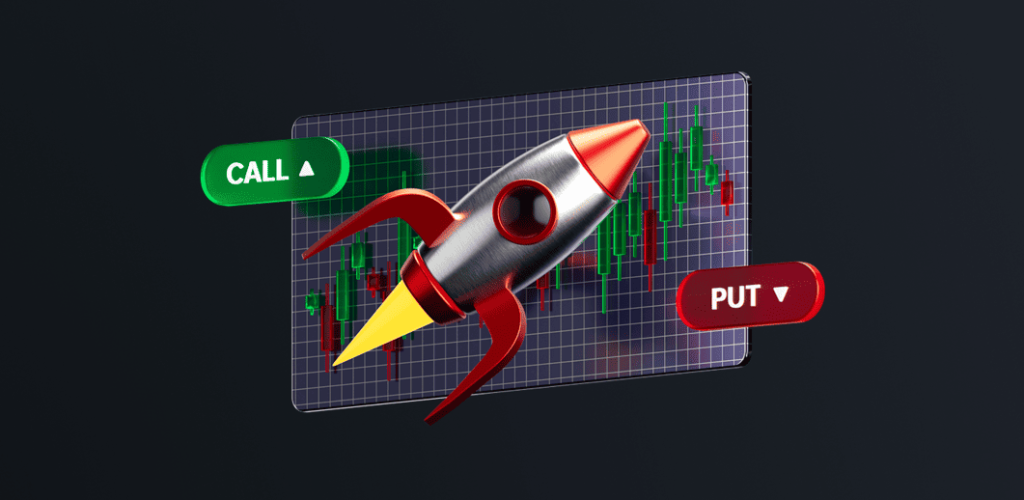Back
Contents
Order Execution: All You Need to Know


Demetris Makrides
Senior Business Development Manager

Vitaly Makarenko
Chief Commercial Officer
What is Order Execution?
Order execution acts as the spine that greases timely and accurate satisfaction for buying or selling orders by either an investor or trader in contemporary modern times. This characteristic of quality and efficiency in execution will make or break an investment strategy. Basically, understanding the complexities of the execution process is valuable in their individual and institutional involvement in markets.
On its simplest level, the idea of order execution entails placing, routing, and the actual execution of trades in the financial markets. The above is only enabled through a mesh of advanced technologies and protocols that work tirelessly at the back end for continuous order flows. From high-frequency trading algorithms to more complex order types, the landscape has changed dramatically and it’s largely driven by the unending demand for speed, precision, and cost at the same time.
The Order Execution Lifecycle
Order Placement
This whole process of order execution starts when the investor or trader places a buying or selling order for any financial instrument, such as a stock, bond, or a variety of financial derivatives. It is at this stage that the type of order becomes vital, as this will specify the particular conditions that need to be met during order execution.
A market order is the simplest kind, and it instructs the broker to execute the trade at the best price available in the market. These orders prioritise speed of execution over price precision and are thus prone to possible slippage during volatile conditions in the markets.
By contrast, working orders require the fulfilment of pre-set parameters, which include limit orders, stop-loss orders, and stop-limit orders, before actual trades are made. Therefore, with such order types, investors would be able to exercise a better level of control over execution prices, but might be delayed.
Investors can further specify an order using both fractional and notional quantities. Fractional trading enables buying or selling less than a whole share, while notional trading enables orders to be specified using a monetary value that is then translated into shares.
Order Routing
The broker or the brokerage firm then has to route that order for its best execution. Order routing, therefore, significantly entails a painstaking study of market liquidity, execution speed, and also the probability of the occurrence of price improvement.
Brokers may route orders to the following:
- Floor of an exchange, such as the New York Stock Exchange;
- Route the order to a third-party market maker;
- Internalise the order by filling it from the broker’s own inventory;
- Route the order to an ECN, which automatically matches buy and sell orders.
Again, the venue of execution will be of immense importance since the price and speed of execution depend on different levels of liquidity and price discovery across various markets.
Order Execution
The final step in the lifecycle of order execution is actual trade completion. In this stage, the matching of buy and sell orders is precisely carried out, and the trading needs to be executed at the best price possible for the investor.
Price matching and possible price improvement, for that matter, are an integral part of order execution. The brokers have a duty to get the best execution terms for their clients, which could be in the form of executing the trade at a price that is better than the publicly quoted bid or ask.
It is also very important to have the speed of execution, in which case delays would put investors at risk of market threat and price slippage. The latest order execution systems will be able to execute trades in microseconds to reduce the latency effect on investment outcomes.
Upon execution of the order, notification of the same is sent to the investor, and settlement takes place per the prevailing regulations and timelines of that market.
Who are the Key Stakeholders in Order Execution?
Investors and Traders
Investor and trader buyers and sellers drive the whole execution ecosystem. Therein lies the rich variety of market participant needs and expectations regarding ordered execution from those whose demand is the speed of execution, literally in nanoseconds, to the requirement of having precision control over price.
Execution quality can significantly affect investment outcomes in terms of the size of the realised gain, performance of portfolios, and comprehensive risk management. Investors and traders who can consistently get reliable, transparent, and affordable order executions are more likely to achieve their financial goals.
Brokers and Broker-Dealers
In this chain of order execution, brokers and broker-dealer firms fall right in between investors and financial markets. They execute orders for clients, ensure adherence to regulatory requirements, and aim to get the best possible results for their clients.
Brokers are under the “best execution” rule, which means they have to seek the best terms available for their customer’s trades, taking into consideration variables like price, speed, and likelihood of execution. Regulators such as the Financial Industry Regulatory Authority (FINRA) and the Securities and Exchange Commission (SEC) scrutinise adherence to these rules.
Exchanges and Market Makers
The exchange and market makers are really the cornerstones of the financial markets, providing much-needed liquidity and price discovery mechanisms that enable efficient order execution. These participants are a key link in the order execution lifecycle, integrating brokers and broker-dealers for smooth trade execution.
They provide a place of exchange, like the NYSE and Nasdaq, where the buying and selling orders are matched. The market makers also provide continuous buying and selling quotations on certain securities to make sure that orders are executed even when a direct counterparty is not available.
For their part, high-quality and responsive execution venues could substantially impact execution speed, prices, and the effectiveness of filling the execution orders, and so forth naturally as significant stakeholders in the general landscape of order execution.
You may also like

Order Execution Systems and Technology
Architecture and Components of Order Execution Systems
At the back of this process of execution today is an extremely sophisticated web of high technology and advanced protocols, commonly called order execution systems, that have been created for handling placement, routing, and consummation of trades at incredible speeds with total accuracy.
The core of any order execution system is the Order Management System (OMS) and the Execution Management System (EMS). The OMS provides the management of the life cycle of the order from its placement to the final settlement. At the same time, the EMS handles the routing of the order and executes it across a variety of venues.
Completing these basic building blocks are sophisticated trading algorithms combined with smart order routing mechanisms that optimally realise order execution, including all parameters related to market conditions, liquidity, and the exact nature of the trade.
Order Execution System Features and Capabilities
These are robust order execution systems that boast an array of features and functionalities to support brokers and dealers working in line with regulatory requirements, thereby enabling the efficient servicing of clients.
Real-time exposure monitoring and management of risk facilities will be necessary to hedge automatically, as well as manually hedge client positions so that potential losses are minimised. Advanced order types and execution settings, such as price collars, kill switches, and tiered margining, provide granular control over the order execution process.
Connection to the widest range of execution, including exchanges, ECNs, and OTC markets, would ensure that orders could be routed to the most viable sources of liquidity for price improvements and quicker execution times.
Emerging Trends and Innovations
The order execution landscape has been in constant evolution, driven by continuous technological evolution and relentless pursuit of speed, efficiency, and cost-effectiveness.
In light of the widespread use of high-frequency trading and low-latency execution strategies, implies developing trading algorithms that can identify and exploit market opportunities in microseconds. A great contribution was also made by machine learning and artificial intelligence, being put to good use in optimising order routing, price discovery, and risk management.
Emerging innovations, including distributed ledger technology and the growing crypto-asset trading ecosystem, are also changing today’s landscape of order execution, bringing with them a set of new challenges and opportunities for market participants.
Regulatory Landscape and Best Practices
Best Execution Requirements and Regulations
Order execution falls under the robust regulatory framework of the government and other bodies, such as FINRA and the SEC, which have formulated certain rules and guidelines to protect the interests of the investors.
At the heart of these rules lies the “best execution” rule, whereby brokers and broker-dealers are required to execute their clients’ trades under the most advantageous conditions available, taking into consideration price, speed, and likelihood of execution. The brokers have an obligation to measure and report on the quality of their executions. This allows investors to gain an insight into where their order flow is executed.
Compliance with these regulations is closely followed; failure to meet the required standards often results in significant penalties and severely damaged prestige among brokers.
You may also like

Broker-Client Relationships and Fiduciary Duty
It is a fiduciary relationship in which the broker must not only be responsible but also answerable in a legal sense for always acting in the best interest of the client. This includes his responsibility through the process of execution, which concerns best execution and disclosure to avoid conflicts of interest that impair the quality of execution.
This means brokers also have to make sure that client orders and order flow arrangements are properly handled, and any order placement and routing should be done equitably without external pressures such as payment for order flow or other structures of incentives.
Ethical Considerations and Potential Conflicts of Interest
Ethical dilemmas and possible conflicts of interest are part and parcel of the ecosystem of order execution. Payment for order flow, where brokers are incentivised to send orders to a particular venue of execution, has also been raised in consideration in light of concerns about being fair and transparent with respect to the process of execution.
Consequently, brokers will have to very carefully weave their way through these complex issues of balancing the duty of care for their clients with regulatory and commercial interests. Of paramount importance will be high ethical standards and dedication to investor protection, not to damage the integrity of the order execution landscape.
Challenges of Order Execution and Mitigations
Market Volatility and Liquidity Impacts
Market volatility and liquidity may strongly strike at the magnitude of order execution. In other words, during a turbulent market scenario, speed and accuracy in order execution are likely to be hampered, probably with higher slippage, consequently causing losses to the investor.
Brokers and execution venues will be expected to handle this dynamic market with the most advanced risk management tool, a robust algorithm for order routing, and a market-making capability to perform the client order execution as efficiently as possible.
Managing Large or Complex Orders
Larger or more complex orders, such as block trades or multi-leg options strategies, involve challenges to order execution systems that require special consideration. Special handling of these orders may be required, including careful segmentation and pacing of execution to minimise market impact and ensure optimal pricing.
Execution of large or complex orders requires sophisticated algorithms, as well as sources of liquidity that brokers and dealers can refer to for efficient management of related complexities.
Preventing and Addressing Order Execution Errors
Despite order execution being one of the most automated and technologically advanced areas, the chances of error regarding price reporting, mismatched orders, or system failures are always there. These discrepancies may result in huge financial loss and loss of reputation for both investors and brokers.
It is, therefore, important that strong risk management frameworks with real-time monitoring, failsafe mechanisms, and comprehensive error resolution protocols are in place to minimise the effect of such execution errors and keep the integrity of the general trading ecosystem intact.
Cybersecurity and System Resilience
The high use of complex technology in the execution of an order has made this area most vulnerable to cyber security threats. This calls for enhanced efforts in cybersecurity by brokers and execution venues to forestall data breach incidents and system disruption, among other malicious acts.
Equally important, the overall resiliency and reliability of the order execution system are also of importance, since these extended outages or service disruptions may have a ripple effect through the entire financial markets and thereby raise doubts over investors’ confidence and trust.
Conclusion
Order execution is an unsung hero in the world of trading, enabling seamless and continued action from buy to sell. For this reason, order execution has become the cog in the wheel of financial markets. As technology continues to expand its reach in speed and efficiency, so too will the landscape of order execution continue to evolve, opening up new challenges and opportunities for investors, brokers, and the greater industry.
FAQ
Order execution refers to the procedure for placing, routing, and filling of buying and selling orders in the financial markets. That is, it provides a broker or some kind of trading platform where buyers and sellers execute transactions.
Order execution only (OEO) refers to a type of broker service whereby the broker will only execute trades on behalf of the client without giving any investment advice or portfolio management services. The client makes all the trading decisions.
Execution time can range from a fraction of a second under the best of market conditions using the fastest trading technology offered by the broker to several minutes, depending on the broker's technology and order type. In today's electronic markets, executions often occur in less than one second, with high-frequency trading systems able to execute orders in microseconds. Larger or more complex orders may take longer to execute fully.
Updated:
February 3, 2025
8 December, 2025
How to Create an Online Casino Platform in 2026
The online casino market reached $19 billion in 2024 and, therefore, will present a massive opportunity for business owners in 2026. More than 60% of online gamblers now prefer mobile options to access digital gambling platforms, which can be attributed to increased internet and mobile use. Moreover, experts forecast a 12.2% annual growth through 2030, […]





